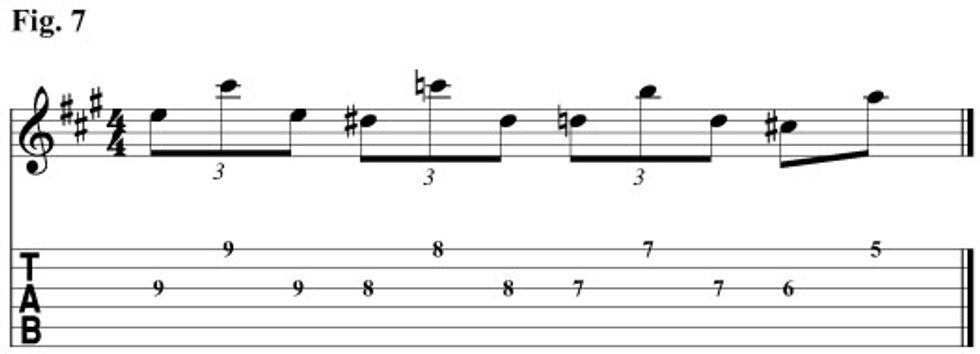Harmony in Western music can be broken into two basic categories: consonance and dissonance. Consonance is synonymous with “stability” and dissonance with “instability.” Harmony in its most basic form can be considered as two or more notes sounded simultaneously. There is a distance, or interval, between the two notes and on the guitar we judge those distances in frets. If you look at the guitar fretboard, one could assume that there are many different possibilities for intervals. You can however divide those possibilities into two categories: simple intervals and compound intervals. A simple interval is any interval that is smaller than an octave (12 frets) and a compound interval is any interval that is greater than an octave.
The interval of a major third consists of two notes that are four half steps apart in pitch, while the minor third consists of two notes that are three half steps apart. Many chords are built using these two intervals in various combinations. To gain a good grasp of applying these harmonic ideas, let’s focus on harmonizing the major scale in major and minor thirds. Notice the first, fourth, and fifth tones are harmonized using major thirds and the rest of the tones are harmonized using minor thirds (the second, third, sixth, and seventh).
Example 1
The G major scale harmonized in thirds.
Download Example Audio...
Example 2
The A major scale harmonized in thirds. Download Example Audio...

A common tool is to invert, or flip, the intervals. In doing thi,s we create two different but common intervals: the major 6th (9 half-steps) and minor 6th (8 half-steps). If you notice in Examples one and two, the lowest note is the root note of the scale, while the highest note is the harmony. If we invert that and make the lowest note the harmony and the highest note the root, we get the 6th intervals.
Example 3
The G major scale harmonized in sixths. Download Example Audio...

Example 4
The D major scale harmonized in sixths. Download Example Audio...

Example 5
The A major scale harmonized in sixths. Download Example Audio...

Example 6
The E major scale harmonized in sixths. Download Example Audio...

Now let’s talk application. Even if you aren’t consciously aware of it, these two approaches to harmonization happen around you all the time. Some of the most common pop tunes utilize these techniques. Classic to modern pop, blues, and rock incorporate these harmonic ideas almost ad nauseam.
Example 7
We utilize the sixths to create a common blues turnaround in A. Download Example Audio...

















